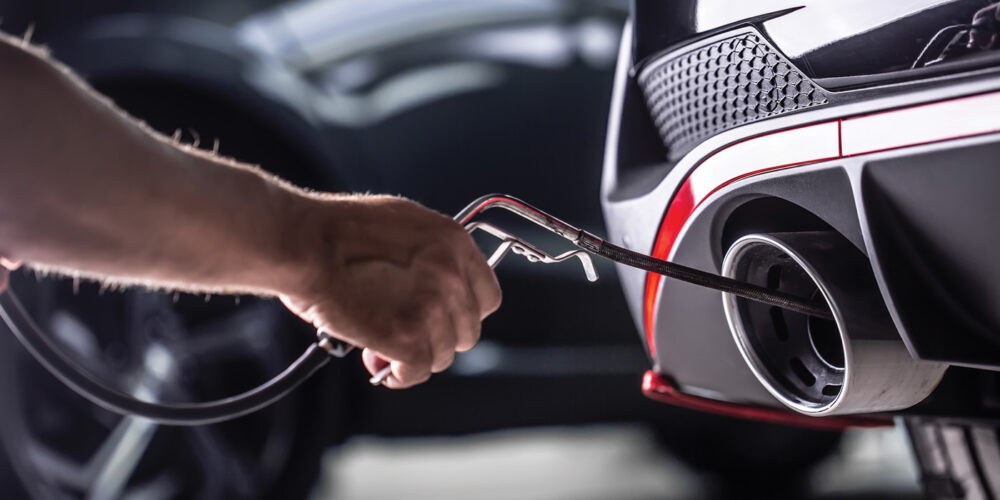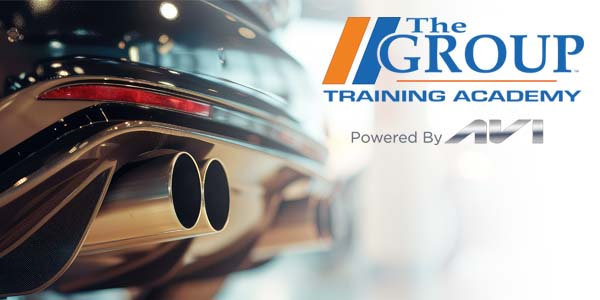Once hated and touted as “power robbers,” we’ve learned over the years how emission-control systems not only protect our environment, but also how they contribute to the overall performance, economy and longevity of today’s engines as an integral part of the combustion process.
Emission-control components are high on the list of parts you sell, because they affect vehicle operation, and if they’re not working properly, they result in the dreaded “Check Engine” light. There are many ways that the various emission systems on a vehicle tie together, but a look at the main players can help you develop a base understanding of how the overall system works.
Positive Crankcase Ventilation
Any internal-combustion engine produces blowby gasses, which are gasses from the combustion process that are forced past the piston rings into the crankcase. These gasses must be vented to prevent pressure buildup, which would cause oil to be forced past gaskets and seals. These gasses also combine with the oil vapors in the crankcase to form sludge and dilute the oil with unburned fuel.
From the early days, we knew that blowby gasses had to go, so we got rid of them – right into the atmosphere. At least that’s what we did until the 1960s (hello smog).
To reduce air pollution, auto manufacturers began to utilize positive-crankcase-ventilation (PCV) systems. PCV was a simple system to draw the vapors out of the crankcase using engine vacuum. The vapors and unburned fuel were then drawn back into the cylinders and burned, eliminating them as a source of air pollution.
But there was another benefit to it. Normal system operation pulled fresh air through the crankcase, which removed moisture – extending oil life and reducing sludge. Since PCV is more or less a controlled vacuum leak, the flow rate is important, and even on older vehicles, the fuel systems are calibrated to work in conjunction with it.
PCV systems still are utilized on modern engines, and engine-management systems are able to monitor their operation by checking the flow rate. The efficiency of modern PCV systems not only reduces emissions but also drastically extends oil life. PCV components range from the simple valves on an older vehicle to more complex integrated PCV orifices/oil separators found on or as part of the valve cover on many new engines.
Other PCV-related components include crankcase-ventilation filters and breather hoses. Don’t forget that these components are designed and calibrated to each engine and fuel system, even on older vehicles. Just because it fits doesn’t mean it’s correct, and also beware of aftermarket “catch cans.” Many people think this is a performance upgrade that traps oil vapor and contaminants before they’re drawn into the intake. This is true on some older vehicles, but on most modern engines the PCV system is so refined that it cannot be improved upon. Installing a “catch can” on these engines will most likely only result in a drivability issue.
Exhaust-Gas Recirculation
Exhaust-gas recirculation (EGR) is an emission-control technique designed specifically to reduce the formation of nitrogen oxide (NOx), a very unhealthy and dangerous gas that’s formed during the high temperature and pressure of combustion. It works by recirculating exhaust gas back into the cylinders and cooling the combustion process.
In reality, it doesn’t actually “cool” the combustion process, but by displacing oxygen, it prevents the air/fuel mixture from burning hot enough to form NOx. EGR can offer advantages to the combustion process, and modern engine-management systems are designed to maximize this, with the efficiency of gasoline engines often improved as a result. Not only is it illegal, but disabling any type of EGR control also will result in a loss of performance.
On diesel engines, EGR is again an effective emission-control device, but becomes considerably more complicated. Since diesel fuel ignites with the heat of compression, higher temperatures promote efficiency … but unfortunately also the formation of NOx. To combat this, many modern diesel engines have EGR coolers that allow a larger mass of recirculated exhaust gas into the intake.
But, this reduces the efficiency of the combustion process, which creates excessive soot. To combat this, a diesel-particulate filter (DPF) is installed in the exhaust to capture and store the soot, which must be burned off periodically to regenerate the filter.
Since EGR systems are critical for emissions and performance, they’re closely monitored and controlled by the powertrain control module. Common EGR components include everything from the common EGR valve to pressure sensors, EGR tubes, EGR coolers, control solenoids and pressure sensors.
Exhaust and Catalytic Converters
Catalytic converters need no introduction. Since the 1970s, they’ve been the major emission component that chemically converts the harmful pollutants in the exhaust into harmless gasses. On todays’ vehicles, they work in conjunction with oxygen and/or air/fuel ratio sensors, also well-known emission-control components.
Before the converters (pre-cat), the oxygen sensors report the air/fuel ratio to the engine control module so it can adjust the fuel mixture based on operating conditions and ensure that an improper mixture will not damage the converter itself. After the converter, a post-cat sensor again sends a signal to the engine control module, from which it determines the efficiency of the converter.
The diesel side again can seem more complicated. They too have what appears as a catalytic converter, but on a diesel, they contain not only a catalyst but also the DPF. They’re sometimes referred to as aftertreatment devices, and overall design can differ between vehicle makes. The process that occurs is referred to as selective catalytic reduction (SCR), during which the catalyst works in conjunction with injected diesel-exhaust fluid (DEF) to convert NOx into nitrogen, carbon dioxide and water vapor.
The DPF traps the soot, which is burned off through passive or active regeneration, and in some situations the process must be performed by a service technician. NOx sensors monitor the entire SCR process.
In addition to catalytic converters, exhaust-related emission components include oxygen, air/fuel ratio and NOx sensors; DEF and DEF-related components; and diesel aftertreatment devices.
Evaporative Emissions
Evaporative emissions refer to anything that helps keep fuel vapors in the tank and out of the atmosphere. This requires very strict monitoring of the pressure in the tank, and when venting is required, filtering of the fumes. EVAP canisters – sometimes referred to as charcoal canisters – store fuel vapors to prevent them from reaching the atmosphere until they can be drawn in by the engine.
The entire process of evaporative emissions requires multiple components, including the EVAP canister, hoses, lines, canister-purge solenoids, canister-purge valves, canister-vent solenoids and leak-detection pumps. The design of these systems often differs between manufacturer, so it can take some time to get used to all the different components.













